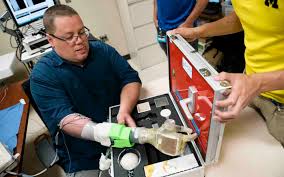
Breaking News
 MELANIA, the film, exclusively in theaters worldwide on January 30th, 2026.
MELANIA, the film, exclusively in theaters worldwide on January 30th, 2026.
 Hospitals murdered COVID patients. The more they killed, the more money they made.
Hospitals murdered COVID patients. The more they killed, the more money they made.
Top Tech News
 This tiny dev board is packed with features for ambitious makers
This tiny dev board is packed with features for ambitious makers
 Scientists Discover Gel to Regrow Tooth Enamel
Scientists Discover Gel to Regrow Tooth Enamel
 Vitamin C and Dandelion Root Killing Cancer Cells -- as Former CDC Director Calls for COVID-19...
Vitamin C and Dandelion Root Killing Cancer Cells -- as Former CDC Director Calls for COVID-19...
 Galactic Brain: US firm plans space-based data centers, power grid to challenge China
Galactic Brain: US firm plans space-based data centers, power grid to challenge China
 A microbial cleanup for glyphosate just earned a patent. Here's why that matters
A microbial cleanup for glyphosate just earned a patent. Here's why that matters
 Japan Breaks Internet Speed Record with 5 Million Times Faster Data Transfer
Japan Breaks Internet Speed Record with 5 Million Times Faster Data Transfer
 Advanced Propulsion Resources Part 1 of 2
Advanced Propulsion Resources Part 1 of 2
 PulsarFusion a forward-thinking UK aerospace company, is pushing the boundaries of space travel...
PulsarFusion a forward-thinking UK aerospace company, is pushing the boundaries of space travel...
 Dinky little laser box throws big-screen entertainment from inches away
Dinky little laser box throws big-screen entertainment from inches away
 'World's first' sodium-ion flashlight shines bright even at -40 ºF
'World's first' sodium-ion flashlight shines bright even at -40 ºF
Researchers Unveil Ultra-Precise, Mind-Controlled Prosthetic: 'It's like you have a hand aga

To achieve this, the researchers developed a way to tame temperamental nerve endings, separate thick nerve bundles into smaller fibers that enable more precise control, and amplify the signals coming through those nerves. The approach involves tiny muscle grafts and machine learning algorithms borrowed from the brain-machine interface field.
"This is the biggest advance in motor control for people with amputations in many years," said Paul Cederna, who is the Robert Oneal Collegiate Professor of Plastic Surgery at the U-M Medical School, as well as a professor of biomedical engineering.
"We have developed a technique to provide individual finger control of prosthetic devices using the nerves in a patient's residual limb. With it, we have been able to provide some of the most advanced prosthetic control that the world has seen."
.............

 The Prime Directive is Evil
The Prime Directive is Evil
 Don't Worry About Bitcoin
Don't Worry About Bitcoin

